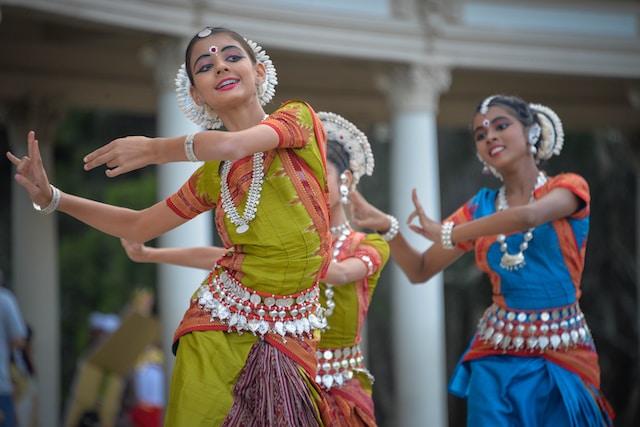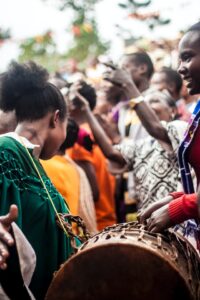Contrary to Trinidad, Guyana and Suriname which recruited indentured workers directly from India, Belize recruited Indian workers from Jamaica and Guatemala as indentured workers for its sugarcane, banana and lumber industries. When their indentured contracts ended many opted to stay behind permanently.
East Indians make up four percent of Belize’s diverse population and can be found most predominantly in Toledo and Corozal districts.
History
Belize is a vibrant melting pot, home to people from every corner of the globe who come together to build its rich culture and make themselves at home here. Each group brings something distinctive – be it soulful Garifuna music, vibrant Creole dance or hearty Mayan cuisine – which enriches this beautiful country.
In the 18th century, Indians (known as Coolies in India) were brought to Jamaica and later Belize on indentured servitude contracts to work on sugar cane plantations work. Once their contract had expired they could return home.
Over time, prejudices towards Indians diminished and inter-marriages among Creoles, Garifunas, and Indians became commonplace. Unfortunately for Indians however, maintaining their traditions proved challenging as they integrated with local culture by learning English – the language used on plantation farms- as well as being exposed to music, dress style, and dance performances from local populations.
However, they have managed to preserve their culture through workshops and meetings designed to educate younger generations about it. Furthermore, they have made efforts to form cultural institutions like the Corozal Organization of East Indian Heritage in an attempt to preserve it further. Their contribution to the community is truly immense, particularly as an example to others of why it’s essential not to forget your roots. Additionally, they have helped raise awareness regarding issues of HIV/AIDS and poverty among Indians living in Belize. They have made it their goal to give their community a voice and presence in Belize, with one COEICH leader, Sylvia Singh, being instrumental in doing just that by attending international forums and conferences relating to this issue.
Religion
Religion plays an integral part of Belizeans’ daily lives. While most Belizeans identify as Roman Catholic, there are also Protestant and Seventh Day Adventist communities as well as Muslims and Buddhists living here.
Belize’s East Indian population tends to adhere to Hindu principles such as Yoga and Vedanta, although they practice some Buddhist concepts as well. Most of Belize’s Muslims hail from Syria but there is also a small Lebanese presence that tends to keep itself separate. Though these communities tend not to mingle much with other groups in society at first, eventually more integration will occur as time progresses.
Though living in relatively isolated communities, Belizean East Indians remain highly engaged in public life. From engaging in drama, dance and music productions to celebrating public holidays with great gusto. Both Garifuna and Mayan cultures contribute significantly to Belizean society.
As soon as the American Civil War ended and slavery was abolished, many Indian immigrants from Forest Home, Mafredi and Cattle Landing settled in Toledo District to work on sugarcane plantations in the Caribbean. Later they also ventured into logwood construction as well as road building.
Today, the Corozal Organization of East Indian Cultural Heritage (COEICH) is a non-profit group dedicated to preserving East Indian culture in Corozal and beyond. Additionally, COEICH has taken advantage of opportunities presented to them to establish relationships with similar groups around the globe and rebuild a support system in order to revive their lost heritage.
Food
Belize, an eclectic melting pot, has seen an influx of Middle Easterners primarily serving merchants or professionals operating stores or offices. Recently however, an emerging Indian community – though smaller in number than previously expected – has emerged, making an impression through restaurants like Sumathi that serve strictly Indian food prepared in an authentic style.
East Indians (also referred to as Indo-Belizeans) make up approximately 3.9% of Belize’s population and can be found most commonly in Toledo, Corozal and Orange Walk districts. As one of the earliest waves of indentured labour after slavery was abolished, many completed their contracts and remain to build successful entrepreneurial ventures that provide critical support for their communities.
Though much of their work entails agriculture, these communities also boast businesses that export products to countries like the US and UK; traders also play an integral part in these communities and are known for negotiating advantageous prices for goods they trade on the streets. Although tight-knit communities don’t allow much dilution of culture through migration or outside influences, locals are always welcome to visit and shop at businesses or restaurants within them as they possess an open, friendly, welcoming spirit.
Garifuna once had their own language; however, due to intermarriages and emigration they have since lost it. Today they are predominantly Christian; some still practice Hinduism while some still maintain cultural traditions such as cooking with turmeric (curry), or celebrating Hosay/Muharram. Unique to Belize is one of their traditions – which involves burying their dead on the same day in a ceremony called dugu.
Dress
Though many East Indians have assimilated into Belizean culture, many remain true to their original heritage. Younger East Indians have adopted Western-style clothing such as jeans and tee-shirts while older generations continue wearing traditional garb; women wear full skirts with neck scarves tied around their wrists, while men traditionally don dhotis (long cloth).
Belizean populations also possess specific food preferences and traditions that set them apart from the standard cuisine in Belize. Their cuisine often features meat seasoned with curry, roti, dahl or split peas flavored with choka (or other similar spices), as well as growing rice and sugar cane in tropical climates – which forms an integral part of their economy. They employ tacari (a blend of yellow ginger and curry spices).
Belize’s unique blend of cultures can be fascinating for visitors not native to its shores. While some might describe it as a melting pot, I prefer the more accurate image of an intricate latticework with people from across the globe interweaved among one another – a truly international destination that boasts such diverse groups thriving together here!
Corozal Organization of East Indian Cultural Heritage has organized this conference in order to raise awareness about this significant group in Belizean society and their history while helping members connect with those from similar backgrounds. Ceremonial speeches, cultural performances, exhibition displays and trips to nearby sites such as Herman’s Cave and Blue Hole will take place as well as tours of East Indian communities such as Forest Home, Elridgeville Jacintoville Mafredi are scheduled.
Music
Belize remains home to traditional Indian norms despite shifting norms, with an inclusive sense of community lingering alongside some elements of culture lingering on. One such element is food. A popular East Indian dish known as Tarkari (from Bengali for vegetables or meat cooked with spices), is served alongside rice, callaloo salad, fried plantains and local pepper sauce as an example of East Indian fare. Tumeric (yellow ginga) can also be found cultivated locally and added as an ingredient to many dishes throughout Belizean kitchens and South Asian regions alike despite native origins; here in Belize it can also be grown locally and used as an ingredient in various dishes.
East Indian culture is highly-regarded in Belize today, with many of the best-known practices being associated with East Indian communities. Their tight communities do not permit much of their traditions to blend into mainstream Belizean practice, maintaining separate schools, churches, financial institutions and production of food items, furniture parts for industrial vehicles as well as providing much of Belize’s grain supply.
The Corozal Organization of East Indian Cultural Heritage, an independent non-profit founded in 2009, works to preserve and promote East Indian culture within Corozal Town. They also aim to make connections between people of similar culture both inside and outside Belize in order to resurrect lost heritages.
East Indians in Belize are an industrious, hardworking culture with strong family ties and traditions, well-versed in bush medicine, and hard workers who tend to work long hours. Yet their hospitality makes them part of Belizean society; visiting one of their villages will allow you to learn more about them as a true cultural force in this beautiful nation. Make sure your trip includes stopping by one of these special communities so that you can witness how this largest ethnic group contributes to Belizean diversity!




